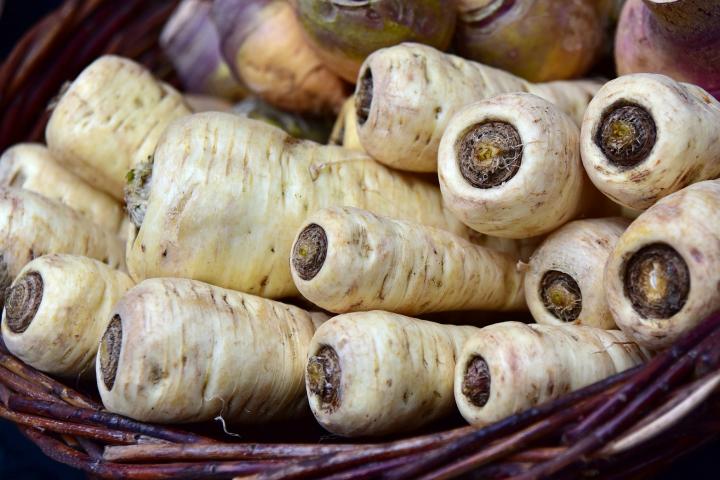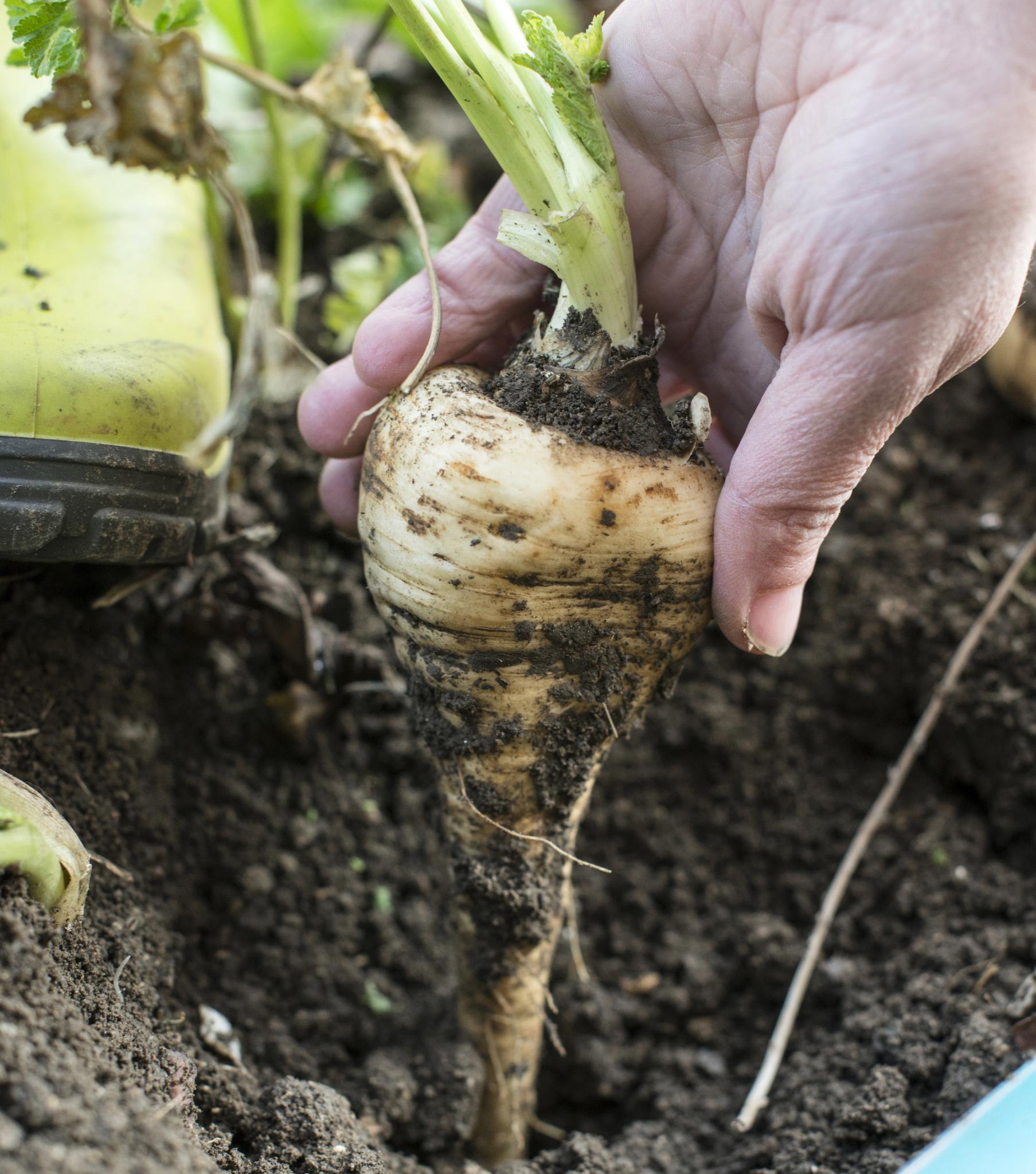
Discover how to grow sweet, earthy parsnips—perfect for cool-season gardens
The Almanac Garden Planner - Use It Free for 7 Days!
Plan your 2025 garden with our award-winning Garden Planner.
Types
Choose short-root varieties for soil that is shallow, heavy, and/or contains a lot of rocks.
- ‘All-American’: Tapered, 10- to 12-inch white roots; high sugar content; stores well
- ‘Harris Model’: Smooth, tapered, 10-inch white roots, free of side roots
- ‘Hollow Crown’: Mild, 12-inch white, fine-grain roots; flavor improves after frost
- ‘Kral Russian’: Heirloom; beet-shape root; good for shallow or heavy soil.
Cooking Notes
Parsnips and carrots are wonderful when roasted together with rosemary on a baking sheet. The cores of a parsnip can be a little tough. When roasting, we recommend cutting parsnips at an angle into disks.
One of our favorite ways to enjoy parsnips is by pureeing similar to mashed potatoes. They have a sweet and rich flavor and aren’t as high in starch as potatoes. Steam first and then add to your food processor.
ADVERTISEMENT
how do i know when to harest the flower. its yellow right now but how long does it need to go to seed?
Hi Jeremy, as you likely know already, harvest turnip seeds in their second year. When the seed pods, also known as siliques, are dry and have changed from green to tan, cut the stalks with the pods over a cloth or container. Best of luck! —The Editors
Are parsnips okay to eat younger than the full maturity age range? Here in Wyoming, our zone 4b season is so short, and weather is tricky. Are undersized or under maturity parsnips okay to eat, similar to carrots, or must they always go the full number of days? Thanks!
I brought parsnips home from a local grocery and one was sprouting two shoots. How do I parley that into spring planting for fall harvest?
I planted parsnip seed August 9. I did not soak. Had them in raised bed with glass cover initially, and we had some hot temps. A week or so ago a few of the Hollow Crown variety popped up. Today is 28 days - the longest expected for germination. I planned to plant some parsley and carrots where the parsnips did not appear. Lo and behold, today, one lone Harris variety is showing. Should I keep waiting? Might I have burned seed? I think the soil was about perfect in terms of watering. Should I plant more parsnip seed - I may be out of seed now - germination was not good earlier in the season either. I am hopeful. I LOVE parsnips!
Your seeds may have been roasted, unfortunately! Parsnip seeds may struggle with germinating in temps above 85°F. Assuming you live in a place with mild winters, you could still plant now for a spring harvest. We would recommend using fresh seeds, though.
Due to the toxicity of tame parsnip tops, is it safe to compost the top growth without causing problems with using the resulting compost the following growing season in vegetable beds?
I live in Calgary and we are enjoying our latest crop of parsnips. This winter we have had -30F, lots of snow and near summer weather. I regularly leave my parsnips in the ground for the winter and never extra cover. I have done this for over thirty years and everyone has been successful for great feasts of parsnips. I usually grow Harris parsnip brand from Vesseys in PEI, Canada . Often some are over 41/2 diameter and 30" long. I have never had a woody one. The ones over 20" are usually to small to use but the dogs definitely use the small pieces and love them . There is always lot to share with friends and family. I can prove the sizes with pictures.
We have parsnips growing in our garden that I want to leave in the ground until it is cold, but the above ground growth is very tall and might be about to flower. Can I cut that back without damaging the parsnips? I live in Washington, DC.
Parsnip left in ground over winter stalks 18” tall about to flower. What to do with flower? Will parsnips be any good?












